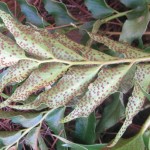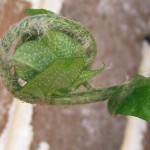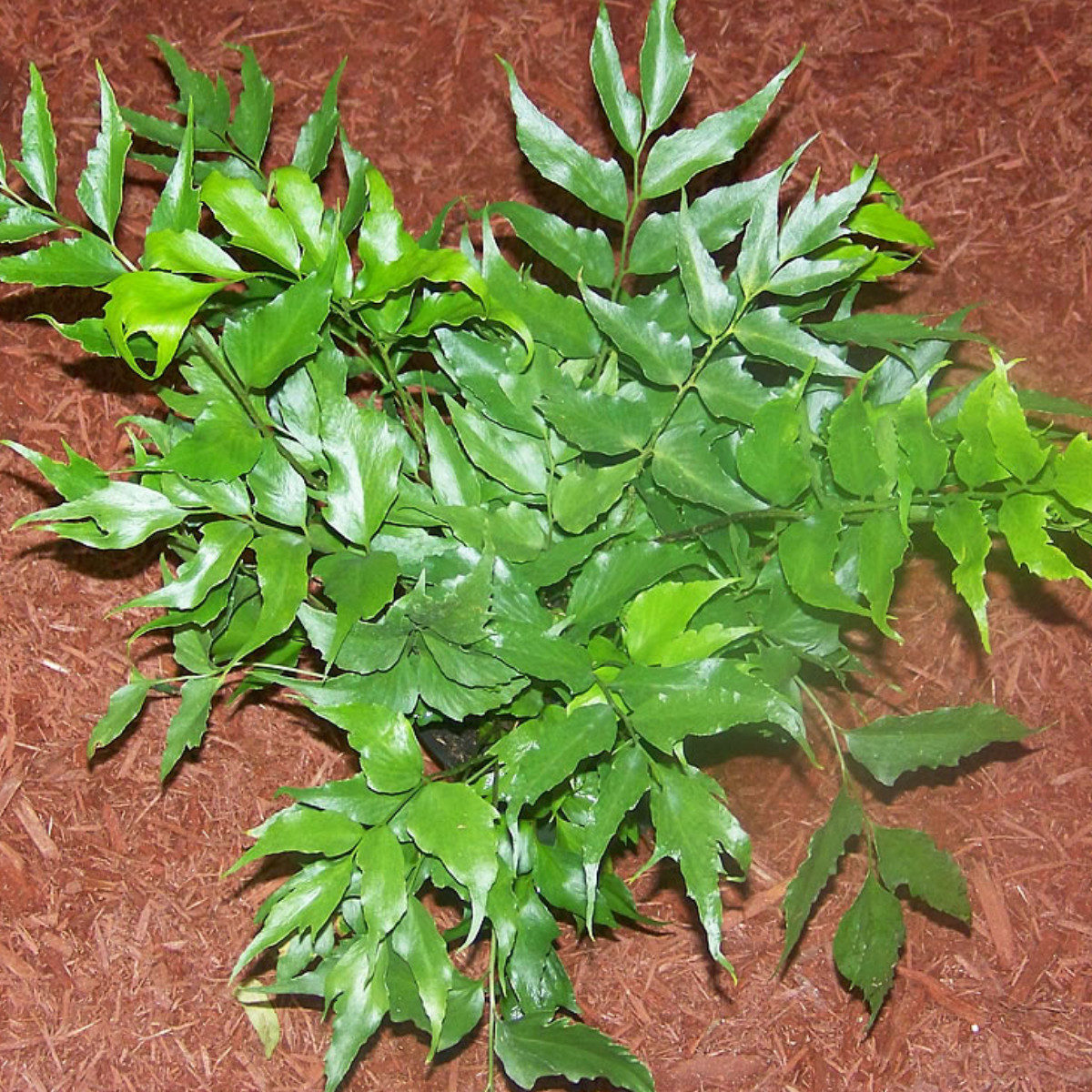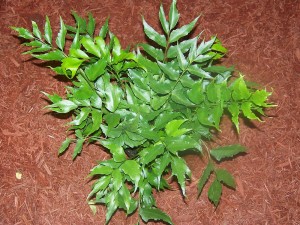Family: Dryopteridaceae
Synonymous: Polypodium falcatum
Aspidium falcatum
Dryopteris falcata
Polystichum falcatum
Phanerophlebia falcata
Cyrtomium yiangshanense
Distribution and habitat: Cyrtomium falcatum is a species of fern native to eastern Asia. It grows from crevices, coastal cliffs, stream banks, rocky slopes, and other moist, stable areas.
This species was naturalised in Australia, Lord Howe Island, North America and Hawaii.
Description: Cyrtomium falcatum became a popular indoor plant, being very decorative, long lasting fern with leaflets that look more like holly leaves than like the division of fronds. It is an evergreen fern. The base of the plant is a rhizome thickly covered with very furry scurf which also covers most of the 10-15cm long leafstalks that rise from the rhizomes. Borne on these short stalks are leathery fronds up to 60cm (24 inch) long, which are held stiffly erect and each frond is divided into several pairs of 10cm (4 inch) long, oval, glossy, coarsely toothed, dark green leaflets. The spores cases that appear in small patches on the undersides of leaflets are green at first but gradually turn light brown.
Houseplant care: Cyrtomium falcatum is a tough plant for growing indoors because it tolerates dry air, low light and gas fumes better than most other ferns.
Light: Provide Cyrtomium falcatum with bright filtered light. These ferns can tolerate quite poor light, but only for short periods of time. If not in permanent bright position, they should be moved into a better light for a few hours periodically - every second day, if possible.
Temperature: Normal room temperatures are suitable and these ferns can also tolerate temperatures down to 10C (50F). In warm position - above 21C (70F) they should be given extra humidity by being standing the pots on trays of damp pebbles.
Watering: In a normally warm position these ferns do not have a winter rest period. Water them moderately enough to make the potting mixture to dry out between waterings. If the indoor temperature ever fall below 12C (54F) for more than a few days, water sparingly allowing half of the mixture to dry out between waterings.
Feeding: Apply a liquid fertiliser at half strength every two weeks to actively growing plants.
Potting and repotting: Use a potting mixture composed of half leaf mould or coarse peat moss. In early spring plants may be moved into pots one size larger, but only if roots have filled the current pots. These ferns should never need larger pots than 15-18cm (6-7 inch). After this size has been reached, top-dress annually with fresh potting mixture.
Garden Culture: Cyrtomium falcatum is a popular ornamental plant in warm climate gardens. This evergreen fern become deciduous in colder climates.
Groom when foliage becomes frayed or unsightly. Ferns will soon regrow after being cut back, but avoid cutting into or damaging the crown.
Position: Cyrtomium falcatum should be placed in the garden in partial to full shade. It tolerates more sun than many ferns.
Soil: Grow in moderately fertile, humus-rich, moist but well-drained soil. Where marginally hardy, plant in the shelter of a rock and mulch the crown with straw in winter.
Irrigation: This ferns grow in a moist but well drained soil. Cyrtomium falcatum needs to be watered quite frequently, every 1-2 weeks ; if there are abundant rains, diminish watering, which should be done only when the soil is dry.
Fertilising: It thrives with occasional fish emulsion or liquid fertilizer.
Companion plants: Cyrtomium falcatum fern can be grown outside in part shade as filler in shady beds with Hosta, Impatiens and Caladium species or with other ferns as a contrast in color and texture.
Propagation: In early spring old plants can be pulled apart for propagation. The rhizome of Cyrtomium falcatum is hidden in the root ball, but it can easily be broken into sections. A section of rhizome with three or four fronds attached will normally establish feeding roots quickly if it is planted just below the surface level of an 8cm (3 inch) pot of standard potting mixture well moistened. The rhizome section should have 5-8cm (2-3 inch) of root already attached to it; if it does not, the potted section will need to be enclosed in a plastic bag or propagation case for two or three weeks. Otherwise, all that is necessary is to put the pot in bright filtered light, watering just often enough to make the potting mixture barely moist, until the new growth begins to appear. Cultivation needs of the new plants thereafter are the same as those of mature plants.
Cyrtomium falcatum is relatively easy to grow from spores. The ripe spores can be collected on a piece of paper placed under spore bearing leaves. Sow spores on damp peat moss in late winter. They germinate best at a temperature of 20-21C (68-70F). The growing medium should be kept constantly moist and covered with glass or plastic. Once new plants are large enough to handle they can be transplanted into individual containers.
Problems:
Cyrtomium falcatum if overwater can develop root rot.
Prevention: Empty the plant saucers after watering, to avoid stagnant water to damage the roots.
Fungal spots can be a problem in damp conditions.
Treatment: Treat the plants with a suitable fungicide and provide aeration for the plant by removing any dead fronds.
Scale insects attack sometime this plant.
Treatment: Use an adequate pesticide.
Recommended varieties:
Cyrtomium falcatum 'Rochfordianum' is one of the most compact varieties. Its fronds are only about 30cm (12 inch), but has large leaflets.
Uses: This unique fern is an excellent potted specimen as indoor plant but it is a popular porch plant as well. It best suitable in woodland or shade gardens. It makes an attractive border around large trees or shrub beds.
In arrangements, long lasting Cyrtomium falcatum fern fronds can be used as background for more colourful flowers.
SUMMARY:
CHARACTERISTICS:
Foliage green
Shape upright
Height: 45-60cm (18-24 inch)
PROPER CARE:
Watering in rest period sparingly
Watering in active growth period moderately
Light bright filtered
Temperature in active growth period min 10C max 24C (50-75F)
Temperature in active growth period min 16C max 24C (61-75F)
Humidity high
Hardiness zone: 7a-11






